As Theodore Bergmann and Louis Schmeisser embarked on the process of perfecting and improving their production pistols, they used a numbering system to identify the different models that were made. There are also model years associated with each major design change, and that can lead to some confusion in trying to understand what guns are what. The very first was the initial 1892/1893 model, which did not have a number (and was in many ways just a prototype). Following that was the Number 1 pistol,also known as the 1894 model.
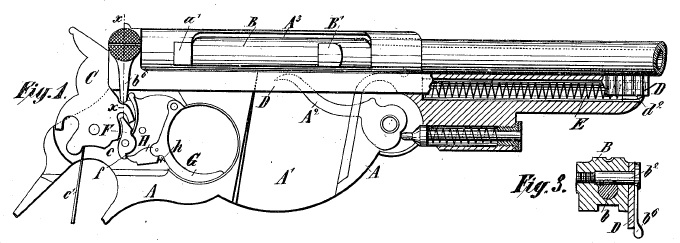
While the model 1894 incorporated a number of improvements over the initial design, it also had some fairly serious flaws, and was not made in large numbers. Literature on the early Bergmanns is pretty sparse, and what there is often raises more question than it answers. In R.K. Wilson’s Textbook of Automatic Pistols, for instance, the 1894 and 1896 guns are lumped together without any differentiation, when they are clearly different from each other. This has led folks like Ed Buffaloe to suggest that the 1894 was essentially a prototype as well. I’m pretty sure he’s right; that the 1894 was a transitional model. We do know that (according to Reinhart and am Rhyn, anyway) the Model 1894 was tested by the Swiss military in 1894 and 1895, which suggests that the results of those tests led to the 1896 changes.
Anyway, I should discuss what the 1894 actually was, shouldn’t I?
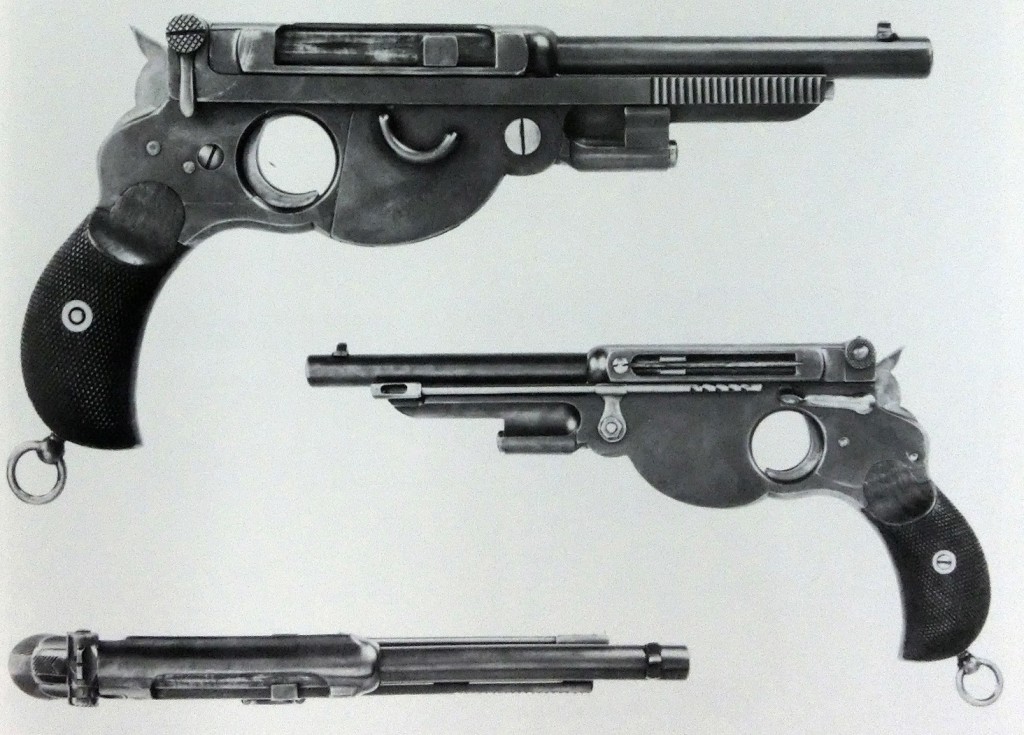
The major change from 1893 to 1894 was a redesign of the operating mechanism from a somewhat odd delayed blowback system to a simple direct blowback. This reduced the expense and complexity of the pistol, although it did limit the power of the cartridge that could be used in the pistol. Of course, in 1894 there weren’t many self loading pistols capable of firing anything but fairly mild cartridges, so this wasn’t really a problem for the commercial market. In fact, the specific cartridge used by the Bergmann No.1 is subject to debate. The ones sent to Switzerland were in 7.5mm, probably the standard revolver cartridge still. They were also manufactured (at least in prototype) for a 5mm cartridge – we have photos of an un-serialed such example from a recent James Julia auction. This particular gun came with a folding trigger.
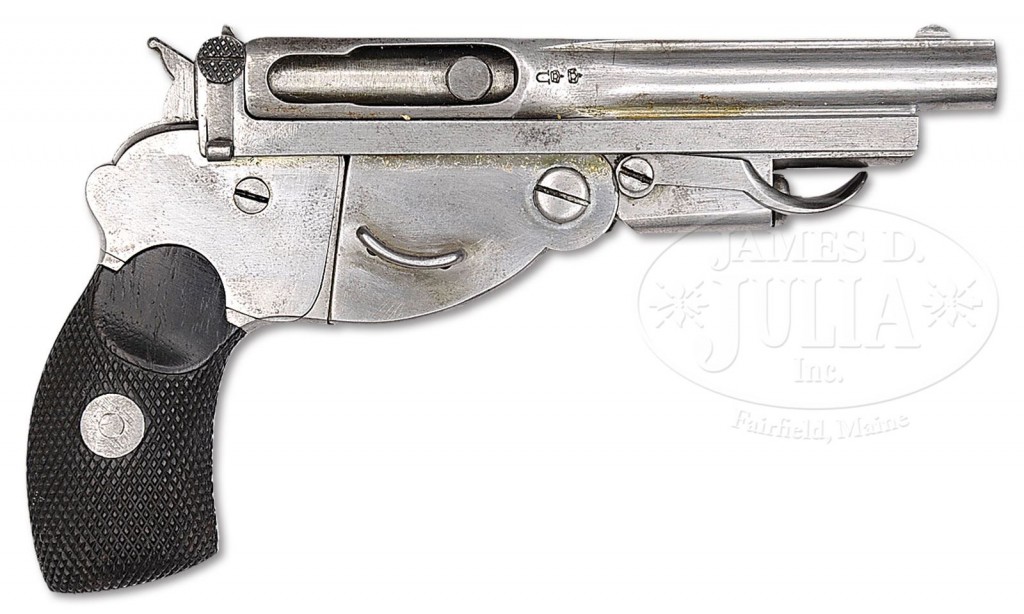
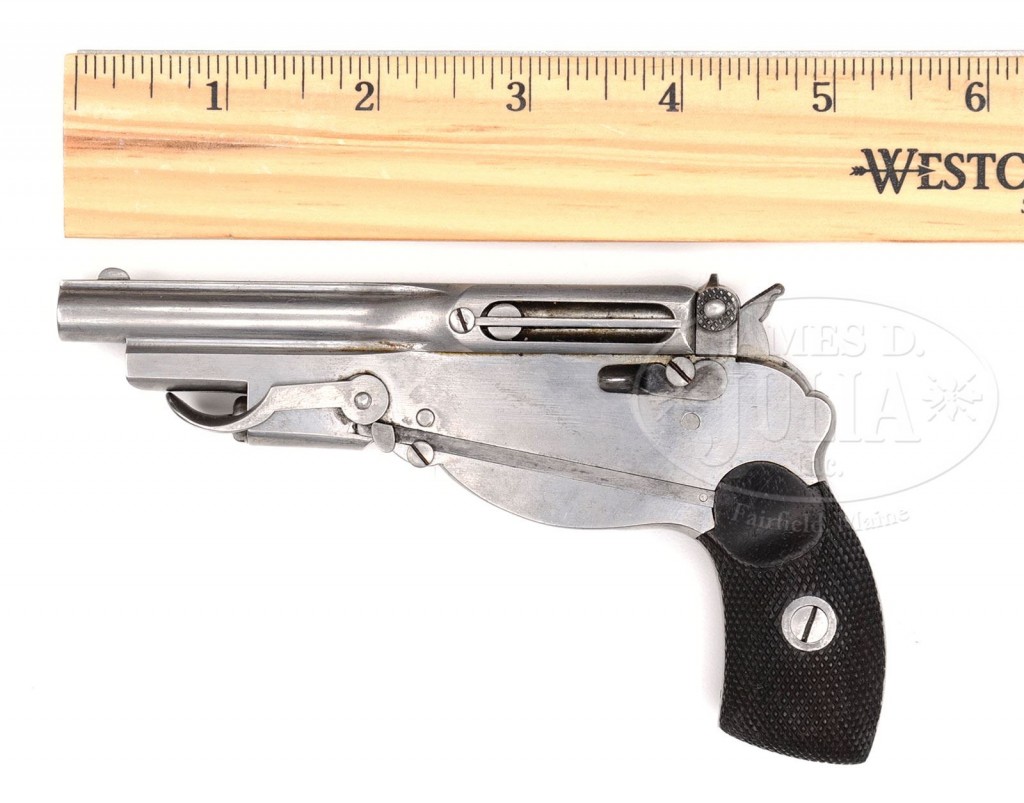


One of the main distinguishing characteristics of the model 1894 is the location of the recoil spring below the barrel. This is evident in the patent granted to Louis Schmeisser (granted in 1893 in Germany and England, and 1895 in the United States), and can also be seen in the above toolroom gun and the surviving photos of the Swiss trials gun. When the design evolved into the 1896 pattern, the recoil spring would be moved behind the bolt. The significant difference in size between the military trials gun and the 5mm toolroom gun suggests that Bergmann was interested in marketing to both military and civilian buyers by this time, where the 1893 had not been made with civilian sales in mind. Of course, given the small numbers and lack of surviving information, it is also possible that the civilian model of the 1893 has simply been lost to history.
One final distinctive feature of the model 1894 is its lack of an extractor. It is not well known among casual shooters that a blowback mechanism will generally extract without trouble, since there is still significant chamber pressure when the case begins moving backwards (on locked-breech pistols, the pressure has dissipated and movement is instead based on inertia in the slide or barrel). Bergmann and Schmeisser exploited this fact and further simplified the early pistols by leaving the extractor off. Early Bergmann cartridges, like the 5mm used in the gun above, indeed had no extractor groove as it was unnecessary. This system worked reasonably well in ideal conditions, and all the 1894 pistols were built this way. It is not clear how the Swiss test pistols were made, given that their 7.5mm ammunition was rimmed for revolver use – I suspect they also had no extractor and simply sized the boltface to fit the rim.
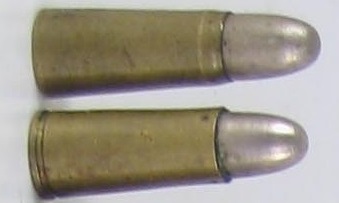
Loading the 1894 was exactly the same as the 1893 – a 5-round clip was laid into the magazine after pivoting the magazine cover plate open. This magazine functioned much like a Mannlicher-style system (Steyr M95, Carcano, etc), as a spring loaded follower finger would push the cartridges up. When the last cartridge was chambered, the now-empty clip would fall out through an opening in the bottom of the magazine. According to Wilson, it was possible to manually load the magazine from the side without the clip by simply laying the rounds in position, but that with or without it the system was fairly prone to misfeeding.
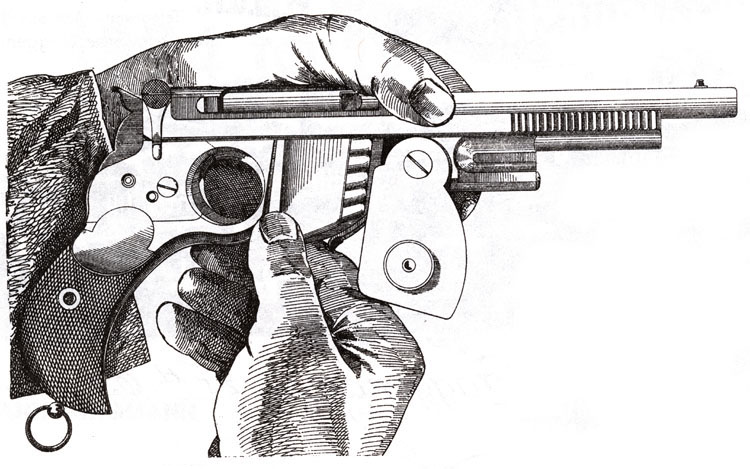
Ultimately, a very small number of No.1 model pistols were made and sold before further the design was further modified to the 1896 type – which would finally be a commercial success for Bergmann. Today they are probably the rarest major type of Bergmann.
Technical Specs
Caliber: 7.5mm Swiss Revolver, 5mm Bergmann, possibly also 6.5mm Bergmann and 8mm Bergmann
Clip Capacity: 5 rounds
Overall Length (Swiss model): 11 in (280mm)
Overall Length (toolroom model): 5.5 in (140mm)
Barrel Length (Swiss model): 5.35 in (136mm)
Barrel Length (toolroom model): 2.75 in (70mm)
Weight (Swiss model): 36.3 oz (1.03kg)
Weight (toolroom model): 8.5 oz (240g)
Action: Straight blowback
Patents
US Patent 547,454 (L. Schmeisser, “Recoil Operated Firearm”, October 8, 1895)
References
Ezell, Edward C. Handguns of the World. Stackpole Books, New York, 1981.
Reinhart, Christian and am Rhyn, Michael. Fastfeuerwaffen II.
Wilson, R.K. Textbook of Automatic Pistols. Samworth, 1934 (reprinted by Wolfe Publishing, Prescott AZ, 1990).

I am looking to buy a magazine for a 1893 Borchardt. Can someone suggest somewhere to buy one?
You might be better off getting designs/dimensions and having a machinist make you a few.
I am so glad that I found your website.The firearms that you publish are really interesting.I have been a firearms enthusiast for over 50+ years and all of your articles are very well researched. Please keep up the great work and many thanks.
Hi, we found recent evidence that Bergmann intended to start production of his pistols in 1893. His own facilities lacked resources and time, so he turned to Mauser and asked them to produce his pistols for him. Mauser then developed about 10 -12 prototype pistols but never commenced series production, as they effectively pushed Bergmann out of the competition by building and patenting their own pistol (C96) in the mean time.
I’m convinced that the 1894 Bergmann from James Julia was actually produced in 1895 by Mauser (crown/crown U proofs show it was proofed in Württemberg, where Mauser is located).